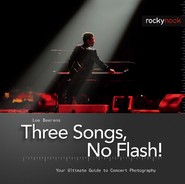The icing on the cake of pop photography is without a doubt the follow spot (or super trooper). The first thing I do when I enter the hall is to find out how many follow spots there are and where they are positioned. Follow spots are operated manually. They follow the artist on stage, most of the time for as long as they are singing, and move to another musician when he starts playing a solo. A disadvantage of follow spots is that the light can be really harsh, especially against a dark background.
Don't tempt yourself by squeezing the aperture too far. In my opinion, f/5.6 is the maximum for a good pop photo. To improve the end result, try including a small background spot that can serve as backlight. Please note that the follow spot is far brighter than the background light. Two follow spots are even better, as you don't have to deal with shadows on either side of the artist's face. Often you will get an increase of light value on the face, so you can go for a higher shutter speed or increase the aperture.
Bigger shows often use four follow spots, and with a bit of luck you will get one behind the artist. It is worth your while to find them, even if it means you have to go down on your knees as they hang really high, close to the rooftop. A good option is to stand as far away from the stage as possible and use a long lens. Count yourself as really lucky if there is also a catwalk. When the artist goes down the catwalk, you can get a shot from behind as if you were standing on stage. With a bit of smoke in the hall, you get to see the beautiful light beam that the follow spots produce thanks to their special lens construction. Use it, because it gives you so much more atmosphere than a regular stage shot (as you can see on the cover of this book).




